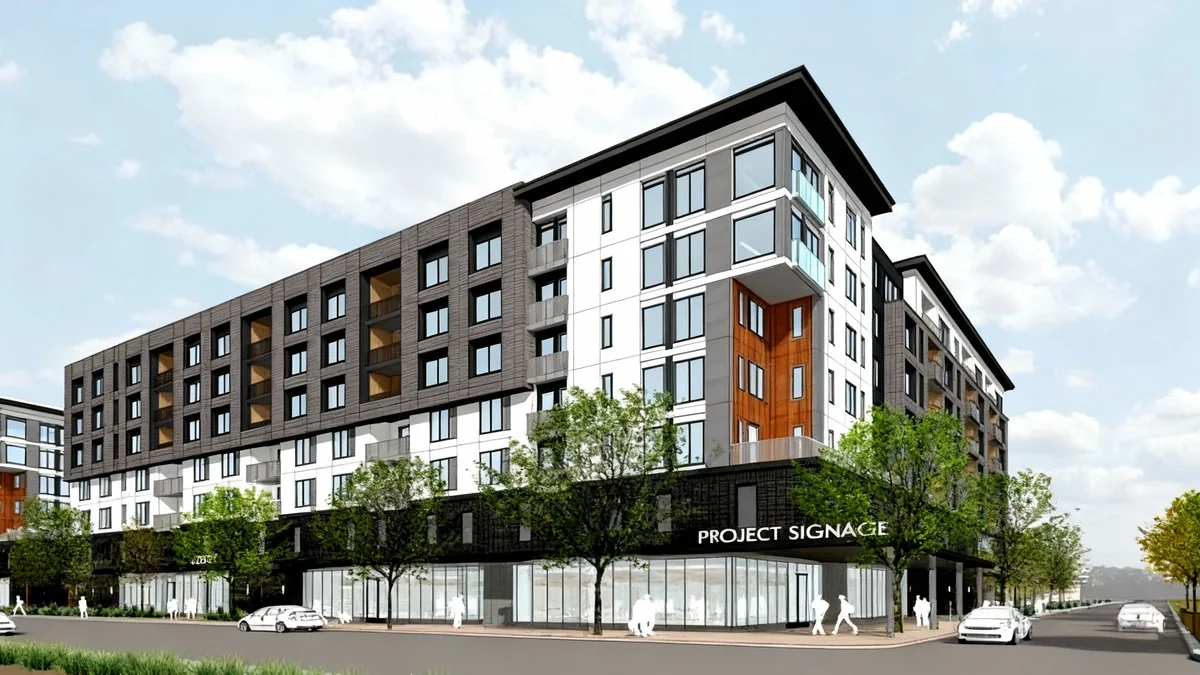For prospective homeowners in 2025, market data suggests a prime window for purchasing a property. The week of October 12–18, 2025, and the periods immediately surrounding it, are expected to offer the most favorable conditions for buyers. This forecast, based on analysis from Realtor.com, indicates a unique confluence of increased inventory, reduced competition, and potentially lower prices.
Key Takeaways
- The week of October 12–18, 2025, is projected as the best time to buy a house.
- This period is expected to offer 32.6% more active listings than the start of the year.
- Buyer competition is forecast to be 30.6% lower than the summer peak.
- Homes may sell 13 days slower than the spring peak, providing more time for decisions.
- Potential price savings could exceed $15,000 on a median-priced home compared to summer highs.
Understanding the 2025 Housing Market Dynamics
The housing market in 2025 has shown a gradual shift from the intense seller-driven conditions of previous years. This change is largely beneficial for buyers. The number of homes available for sale, known as inventory, has been steadily increasing. This movement brings the market closer to pre-pandemic levels. More choices for buyers typically mean less urgent competition and a more measured pace for significant purchasing decisions.
While spring and summer traditionally see heightened homebuying activity due to families aiming to settle before the school year, this also leads to increased competition and higher prices. Fall, by contrast, often presents a strategic advantage for patient buyers. This seasonal pattern is expected to be particularly pronounced in 2025.
Market Stability and Affordability Concerns
The first half of 2025 generally showed stable conditions, with home prices and mortgage rates holding near 2024 levels. This stability offered a break from recent rapid price increases and intense bidding wars. However, affordability remained a significant challenge for many buyers, as both prices and rates stayed elevated.
Inventory Growth and Regional Variations
By summer 2025, a notable increase in available homes was observed. This marked the highest inventory level since 2019. For years, a shortage of homes relative to demand drove prices upward. The market is now showing signs of rebalancing. However, national inventory levels remain below pre-pandemic figures. According to Realtor.com, July 2025 inventory was approximately 13% below 2019 levels.
Regional differences are also important. Some areas, particularly in the West and South, have reported higher inventory levels than before the pandemic. This highlights the importance of local market conditions. Many existing homeowners, especially those with historically low mortgage rates, have shown a tendency to remain in their current homes. This contributes to lower vacancy rates and limits overall supply, preventing a sharp decline in prices.
Economic Factors Influencing the Market
- Concerns about inflation have made both buyers and sellers more cautious.
- Global trade issues contribute to economic uncertainty.
- A potentially slowing job market impacts consumer confidence.
- These factors have led to fewer existing and new home sales.
- Homebuilders are also adjusting plans due to economic uncertainties.
Approaching a Buyer-Friendly Market
While the market has not uniformly shifted to a full buyer's market across all regions, it is closer to a balanced state than in recent years. The national rise in inventory is a key indicator of this change. In the past, buyers often faced pressure to submit offers quickly and without conditions. Now, with more homes available and some buyers holding back due to higher interest rates and affordability concerns, there is more flexibility.
This evolving market allows buyers to take more time when making decisions. It also enables them to include important contingencies in their offers, such as property inspections and financing clauses. Furthermore, buyers may find more opportunities to negotiate on price and terms. Regional variations persist, with the Midwest and Northeast still leaning towards seller-friendly conditions, while the South and West show more balance or buyer-friendly characteristics. Some cities that experienced rapid growth during the pandemic are now seeing increased inventory and softer demand, giving buyers more leverage.
"The market is not crashing, but it is certainly adjusting. Buyers who are prepared and patient will find more opportunities," stated a recent market analysis.
For sellers, this means adapting strategies. They may not consistently receive multiple offers above the asking price. Realistic pricing and offering incentives are becoming more common. Even without pandemic-era highs, motivated buyers are still present for well-presented and appropriately priced homes.
Why Mid-October 2025 Stands Out
The week of October 12–18, 2025, is identified as a particularly favorable period for several reasons, stemming from historical market patterns.
1. Increased Home Supply
Historically, the supply of homes for sale tends to reach its peak in early fall, aligning with this specific week. Realtor.com data projects a significant increase in active listings, potentially 32.6% more compared to the start of the year. This surge in options provides buyers with a wider selection, improving their chances of finding a home that meets their specific needs and budget.
2. Reduced Buyer Competition
Spring and summer typically draw the largest number of buyers, often driven by school schedules and favorable weather. By mid-October, many of these buyers and sellers have completed their transactions. This results in less competition for remaining properties. In 2025, softer overall buyer demand, influenced by affordability challenges, is expected to amplify this effect. Historical data indicates that demand during this week is 30.6% lower than the summer peak. This calmer environment reduces the likelihood of bidding wars, allowing buyers to make thoughtful offers.
Mortgage Rate Watch
A potential dip in mortgage rates towards the end of the year could lead to a temporary increase in buyer demand. However, the projected rise in inventory is expected to help absorb such surges, keeping conditions generally favorable for buyers.
3. Slower Market Pace
The rapid pace of home sales in recent years often left buyers with little time for due diligence. In 2025, the market has slowed significantly, returning to pre-pandemic speeds. By July, homes were taking around 58 days to sell, slightly longer than the 2017–2019 average. The mid-October period typically sees market times slow even further, by approximately 13 days compared to the spring peak. This extended timeframe allows buyers to explore neighborhoods, view multiple properties, and carefully consider their options without pressure.
4. Potential Price Reductions
While national home prices have not seen sharp declines, a seasonal dip is common in the fall. Buyers during the week of October 12–18 could potentially save over $15,000 on a median-priced home compared to summer highs, according to Realtor.com. Nationally, prices are estimated to dip around 3.4% from their seasonal peak during this week. This period also often sees a higher percentage of listings with reduced prices, sometimes exceeding 5.5% of available homes. This trend reflects increased seller motivation in a market with more inventory and less demand.
5. Consistent New Listings
Despite a general hesitancy among sellers in a rising inventory market, the optimal buying week typically sees a consistent influx of new listings. This means that even if a buyer does not find a suitable property among existing homes, new options are likely to become available.
Importance of Local Market Analysis
It is crucial to remember that these are national trends. Local market conditions can vary significantly. In rapidly growing areas, prices might remain more stable, and inventory increases might be less dramatic. In more established or slower-growing markets, the favorable fall conditions could be even more pronounced.
To understand your specific local situation:
- Consult a local real estate agent: They possess up-to-date knowledge of your area's market nuances.
- Monitor local inventory: Observe if the number of homes on the market is increasing in your preferred neighborhoods.
- Track market speed: Note how quickly homes are selling. Are they moving in days or weeks?
- Watch list prices: See if sellers are consistently adjusting prices downward to attract offers.
Buyer Preparedness and Strategy
Timing the market is one factor, but readiness is equally important for buyers. To maximize the benefits of the projected best buying period in 2025, preparation is key.
- Obtain Pre-Approval: Before starting a serious home search, secure mortgage pre-approval from a lender. This clarifies your budget and signals to sellers that you are a serious buyer.
- Define Priorities: Clearly identify your essential requirements and preferred features in a home. This helps streamline the search process and facilitates quick decisions when the right property appears.
- Stay Informed: Continuously monitor trends in mortgage rates and local market statistics. Knowledge empowers better decision-making in real estate.
- Be Patient, But Ready to Act: While data points to mid-October, market conditions can shift. Maintain patience for the right circumstances, but be prepared to act decisively when they emerge.
For those seeking investment properties, strategies often involve identifying markets with favorable conditions, such as those with rising inventory and softening prices, to secure turnkey rental properties that are already renovated, managed, and generating income.





